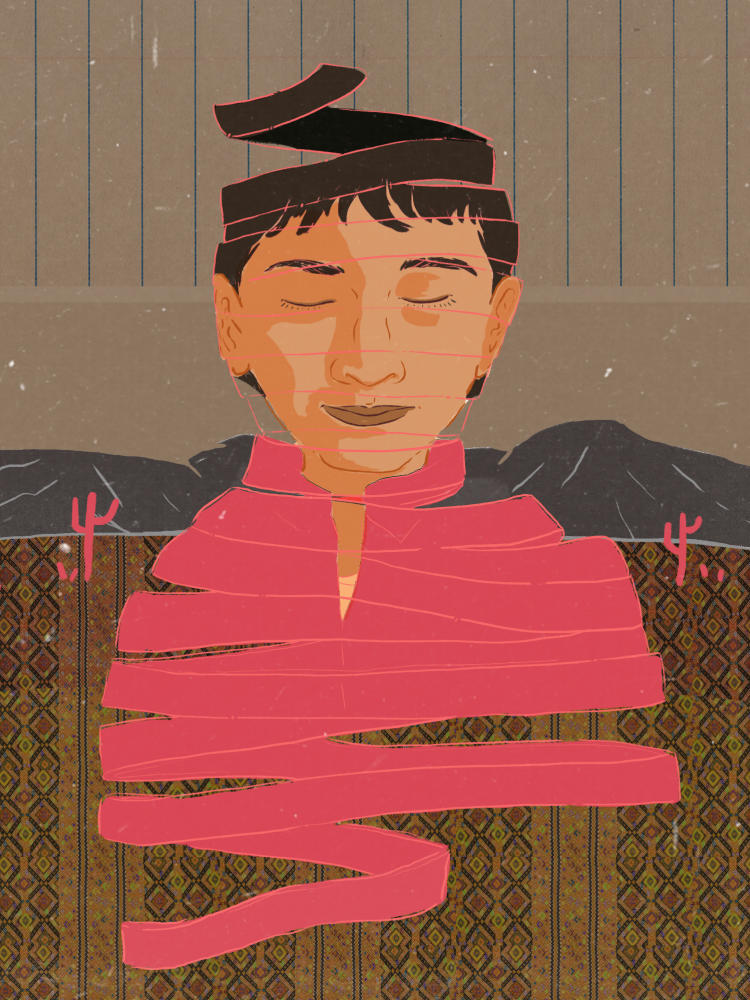It’s been a year since thousands of unaccompanied minors surged into the U.S., overwhelming some school districts. These children, many of whom don’t speak English and have lived through violence, trauma and abuse, pose a serious challenge to schools. Some districts weren’t ready. Oakland, California was.
It was spring of 2014, well before the headlines had begun, when teachers at Oakland Unified realized something was wrong. A lot of students were missing class regularly — and not just playing hooky.
Ariana Flores now supervises the unaccompanied minors in Oakland and says the district had an a-ha moment. “Once they looked into it a little bit more, they realized that [the students] had immigration court dates,” she explains. “They started talking to students and realizing they were unaccompanied minors.”
Flores says the district was quickly overwhelmed with parentless, undocumented students. “They had nowhere to send new enrollees, and they were still coming.”
One of those kids is Victor Ramirez Pablo. During lunch at Oakland International High, he sits under a tree, chatting with several friends. They speak in Mam, a Mayan language from their native Guatemala.
Victor has an awkward haircut that’s moist, with a big, toothy grin and a ring of dewy sweat around his boyish face. He seems like an average 18-year-old until he tells the story of how he made it to the U.S.
“In Guatemala, my parents were homeless. They had nothing,” he explains.
When he was 5, Victor’s parents found work in a nearby village and left him with neighbors. They said they’d come back in a few weeks.
“Months and years went by, and my parents never came back,” he says.
Victor’s neighbors took him in, but they couldn’t protect him from the violence that plagues Guatemala. He remembers once being beaten by police until he lost consciousness.
At 12, Victor ran away, crossing the scalding Sonoran desert by himself and getting lost for weeks at a time. He’s lucky to have made it to the U.S. alive. Once here, Victor turned himself over to immigration authorities. He now lives in foster care and attends high school.
At Oakland Unified, hundreds of unaccompanied minors with stories like Victor’s — at least 400 — walk the halls. One Salvadoran boy was beaten and left for dead after he refused to join a gang. Another boy from Guatemala says he fled to the U.S. after his father tried to kill him.
The challenge for Flores and Oakland Unified was figuring out how to help these kids not only academically but also emotionally and legally.
“The first priority,” she says, “is actually getting them a lawyer.” Oakland was able to spring into action quickly, Flores says, because the district already had programs in place for homeless youth, kids in foster care and refugees.
Last year, the city provided more than $500,000 in legal service grants, while many Bay Area lawyers are also working student cases pro-bono. Flores says every unaccompanied student in her district is now being represented, and, so far, all of them have been allowed to stay in Oakland.
But handling these legal needs is a relatively straightforward task compared to addressing the trauma many of these kids have suffered.
“We’ve got a lot of kids who will just up and leave in the middle of class,” Flores says. “And you don’t really know what it was that triggered them. Maybe it was a book falling that sounded like a gunshot. And they just leave. And so they’re in flight mode.”
Many of these unaccompanied students suffer mental health issues, ranging from anxiety to PTSD. And it’s up to Flores, after an initial visit with each student, to hear their story and get them the help they need.
“Essentially the boys were being recruited by the gangs, and the girls were seen as perks,” Flores says. “Almost every girl has been sexually assaulted in some way, by someone, at least once.”
Alameda county has pledged to spend $2.5 million on mental health services over the next three years. As a result, Flores says, Oakland schools don’t have a money problem. The problem, she says, is that they “don’t have enough Spanish-speaking, bicultural clinicians at each school.”
Making matters even more difficult, these students often need to work to support themselves. Many owe thousands of dollars to the smugglers who brought them to the U.S. or send money home to support family members. Getting these kids to stay in school, instead of going to work, is a real challenge.
One teacher points out that, for students like Victor who once had to learn Spanish as a second language, learning English is a lot easier. Victor has another advantage over many of his fellow unaccompanied minors: Because he crossed the border alone, he doesn’t owe a smuggler. And he has no family back home to support. So, for now, he’s in school and says he’d like to become a police officer — or a social worker so that he can help children.
One thing is for sure: These unaccompanied students and the challenges they present aren’t going away. And Ariana Flores expects more to arrive this year. She says she sometimes feels overwhelmed by the burden of their stories.
“Some days, I just go home, and I need it to be quiet. But, when I think about how strong these kids are … that gives me reason to say ‘OK, I can deal with this. I can deal with listening to these stories, and I try to lift them up.’ ”
9(MDA3MTA1NDEyMDEyOTkyNTU3NzQ2ZGYwZg004))
